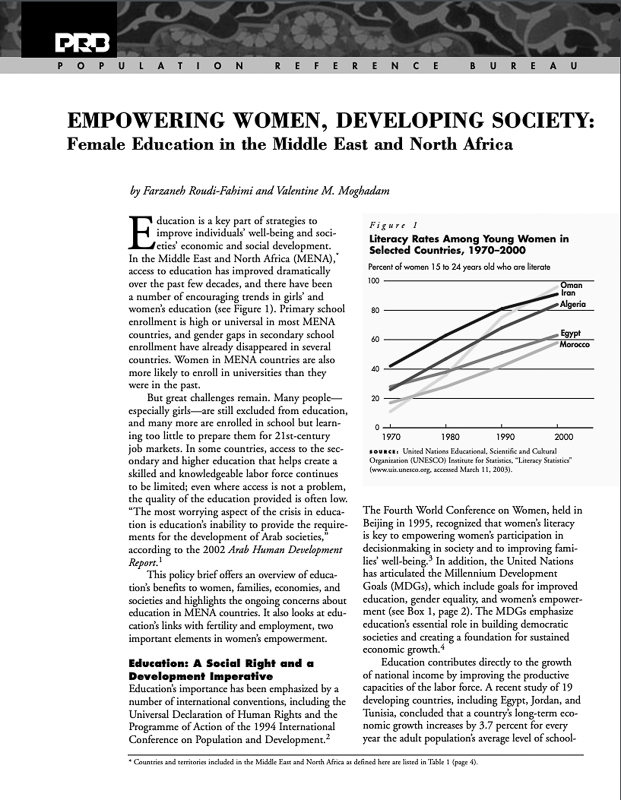637 Search Results Found For : "Best%20Essay%20Writing%20Service%20%F0%9F%8E%93www.WriteMyPaper.online%20%F0%9F%8E%93Write%20Essay%20Fast%20-%20Write%20Essay%20Cheap"

Report. Empowering Women, Developing Society: Female Education in the Middle East and North Africa
(2003) Education is a key part of strategies to improve individuals' well-being and societies' economic and social development.
Empowering Women, Developing Society: Female Education in the Middle East and North Africa
(2003) Education is a key part of strategies to improve individuals' well-being and societies' economic and social development.

Project: KIDS COUNT Technical Assistance and Training
IPUMS Online Data Analysis System Tutorials
Video tutorials introduce data users to the system and provide step-by-step guidance for two key applications.
PRB Discuss Online: Africa’s Demographic Challenges
(2012) Of the 48 least developed countries in the world, 33 are located in sub-Saharan Africa. At the same time, this region stands out with the highest birth rates in the world.
PRB Discuss Online: Integrating Family Planning and HIV Programs
(2010) There is an urgent need for stronger links between family planning/reproductive health and HIV policies, programs, and services.
PRB Discuss Online: Abandoning Female Genital Mutilation/Cutting
(2009) As many as 140 million girls and women worldwide have undergone female genital mutilation/cutting (FGM/C), and more than 3 million girls are at risk for cutting each year on the African continent alone.
PRB Discuss Online: Is Sub-Saharan Africa an Exception to the Global Trend Toward Smaller Families?
(2008) Sub-Saharan Africa remains the "last frontier" of fertility decline. Throughout the developing world (including China), the average number of children per woman has dropped from around six in 1965 to just about three today.
